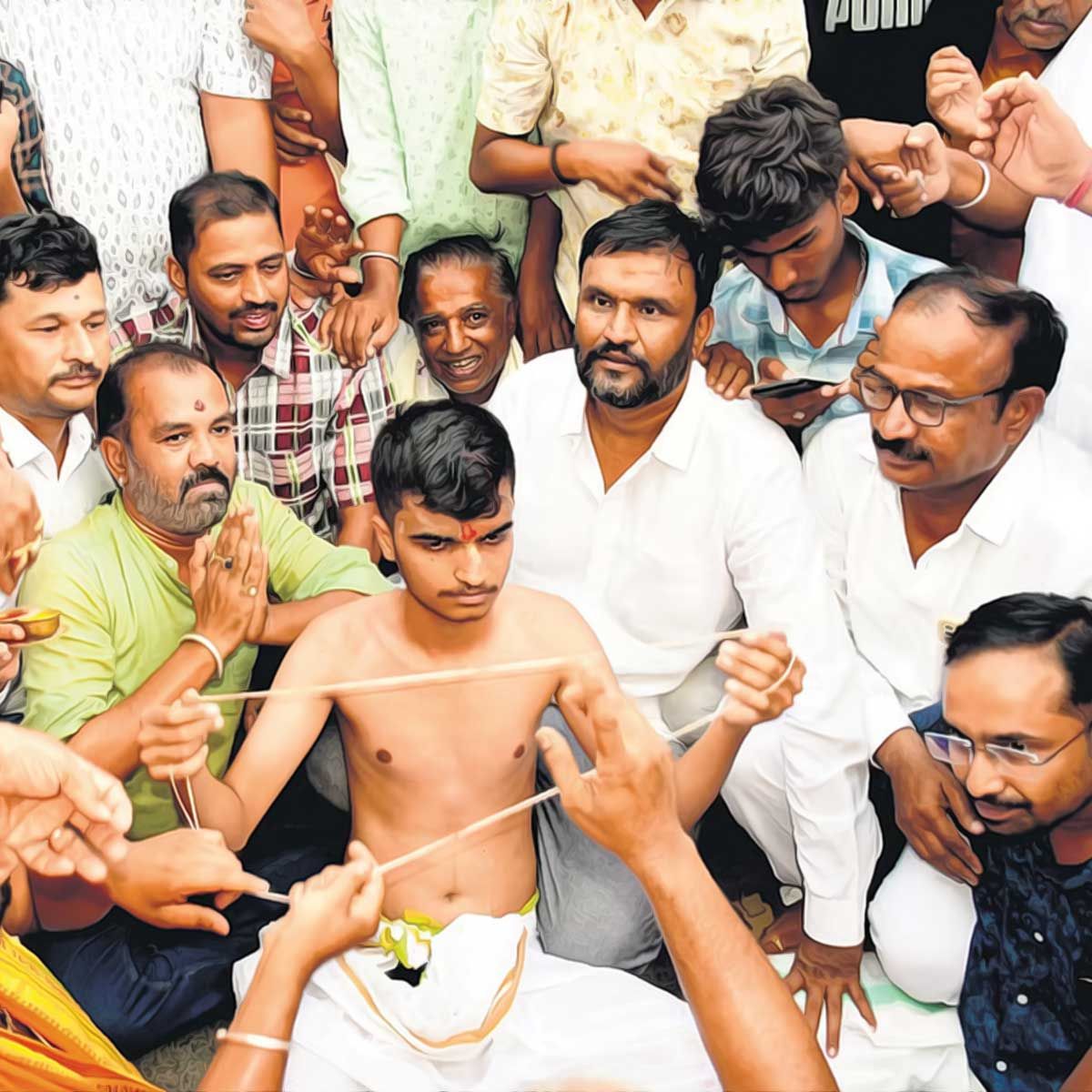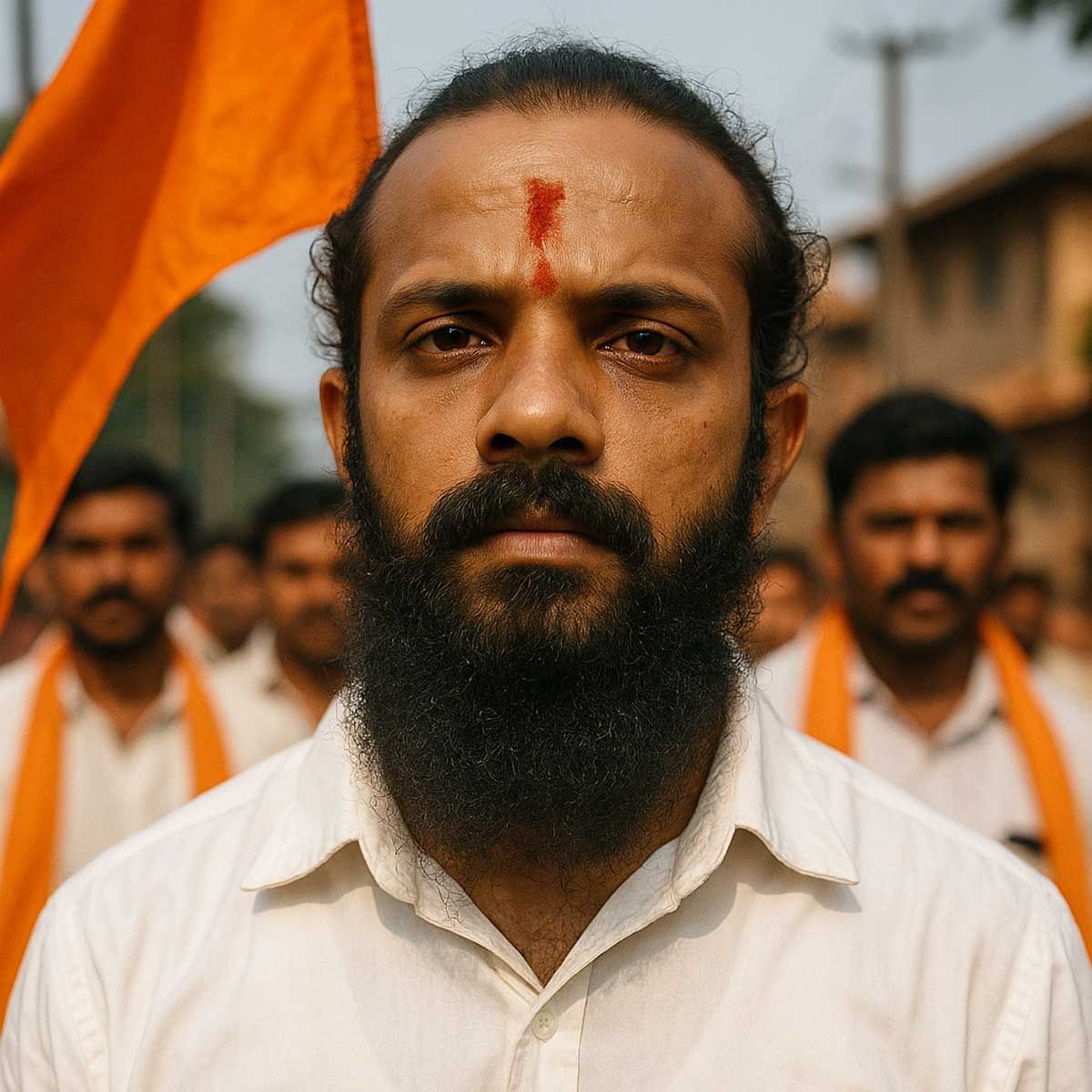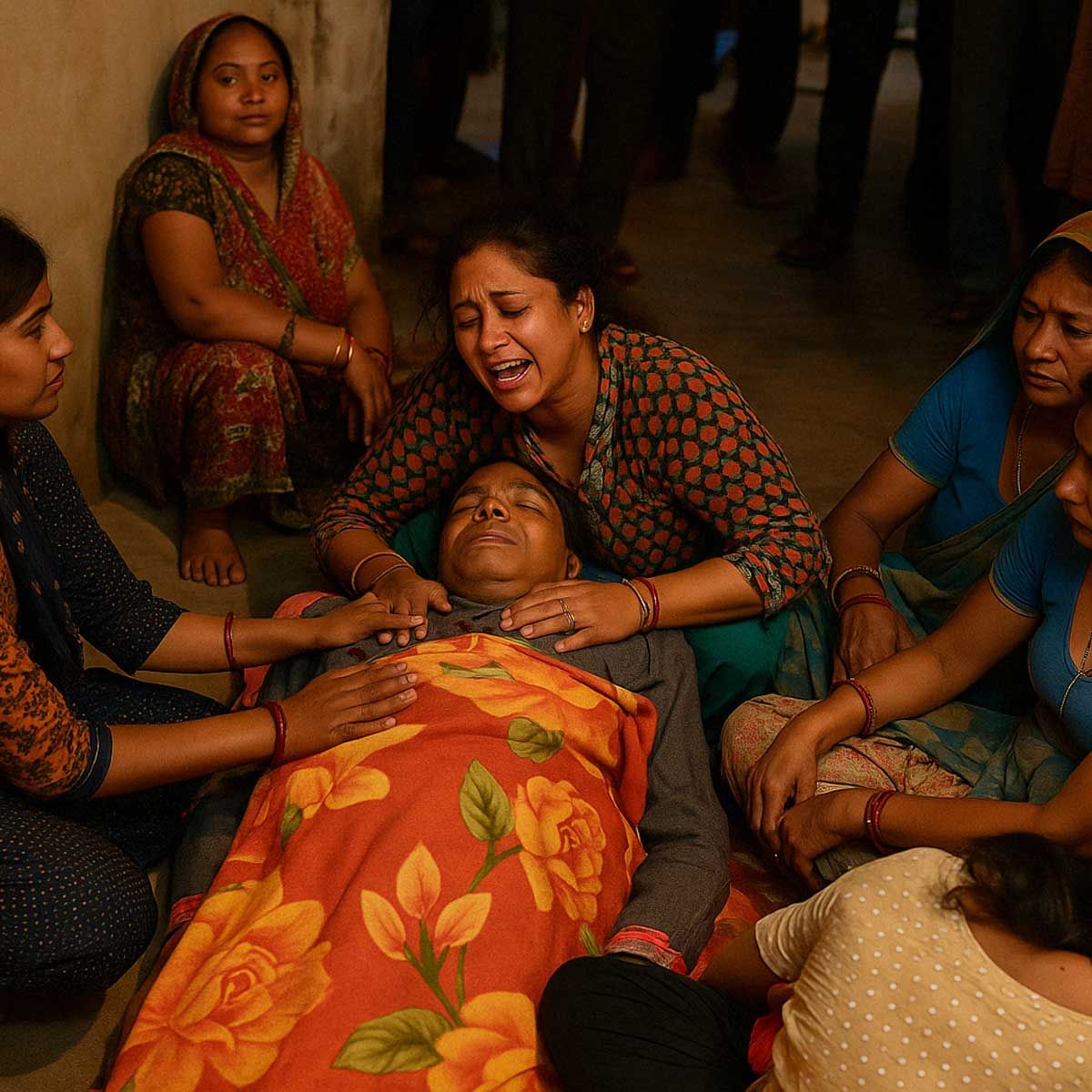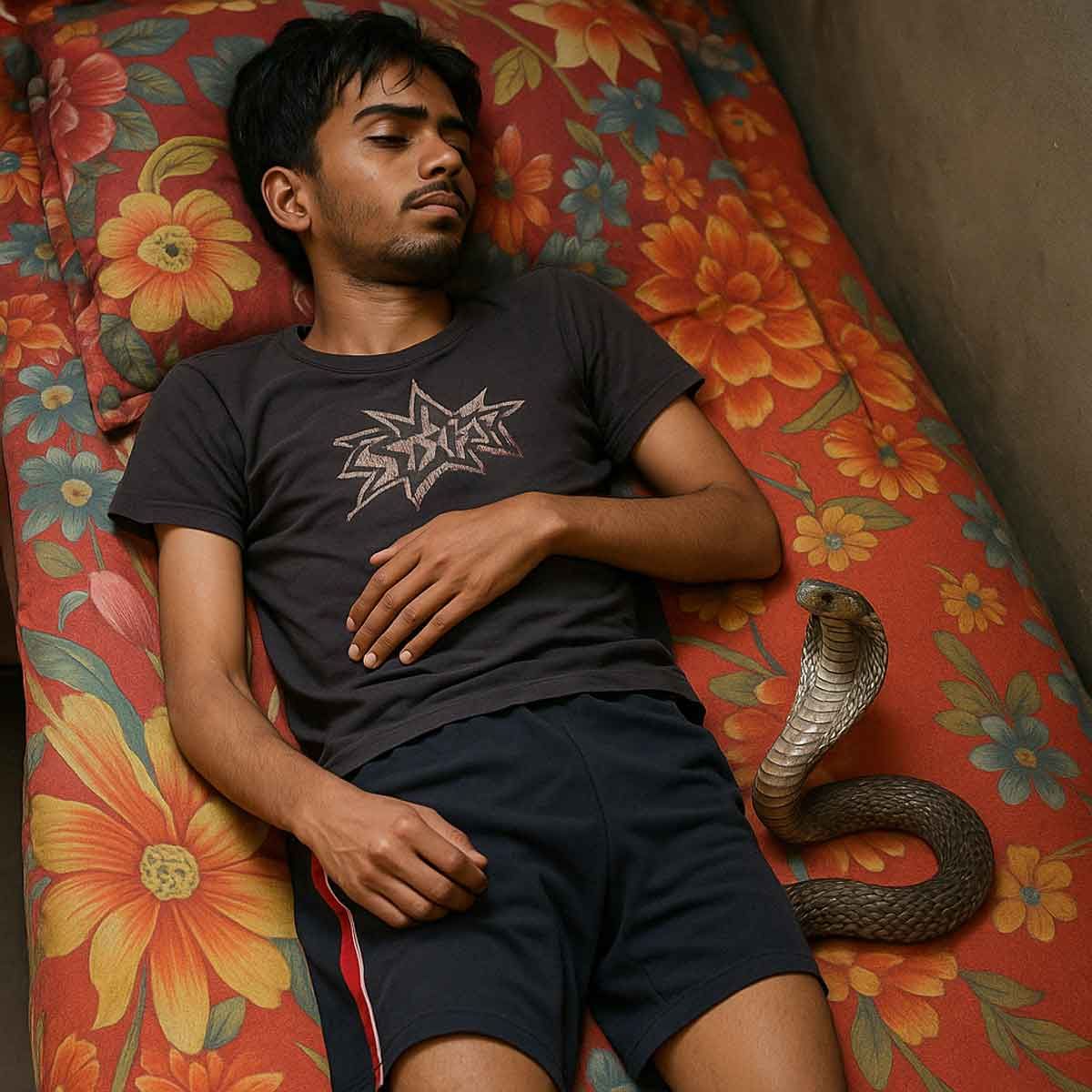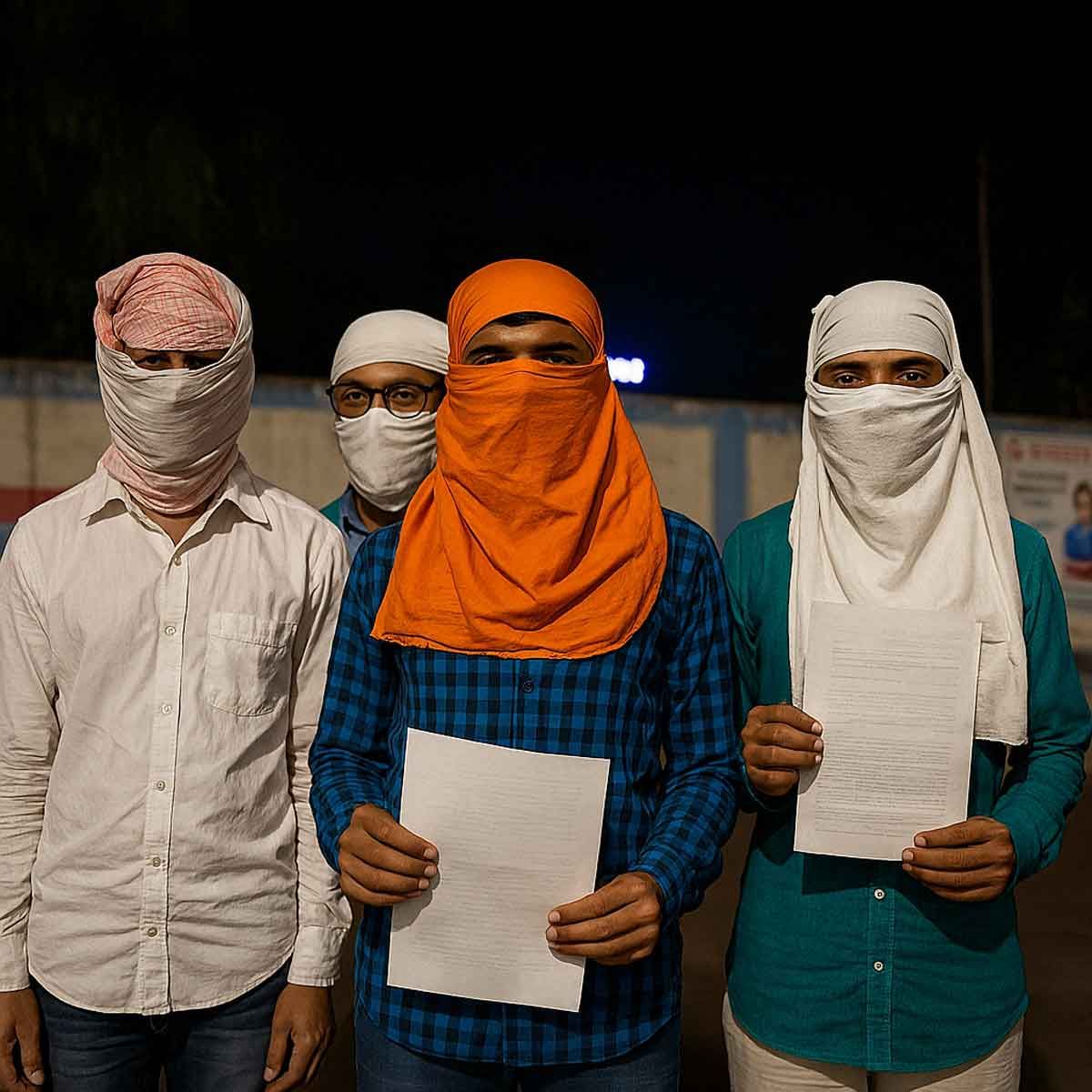More Coverage
Twitter Coverage
Satyaagrah
Written on
Satyaagrah
Written on
Satyaagrah
Written on
Satyaagrah
Written on
Satyaagrah
Written on
JOIN SATYAAGRAH SOCIAL MEDIA
"Whether you sniff it, smoke it, eat it, or shove it up your a$$, the result is same: addiction": Punjab is turning into the villages of widows & orphans due to drug overdose, it has acquired proportions of a pestilence that has shaken the entire society
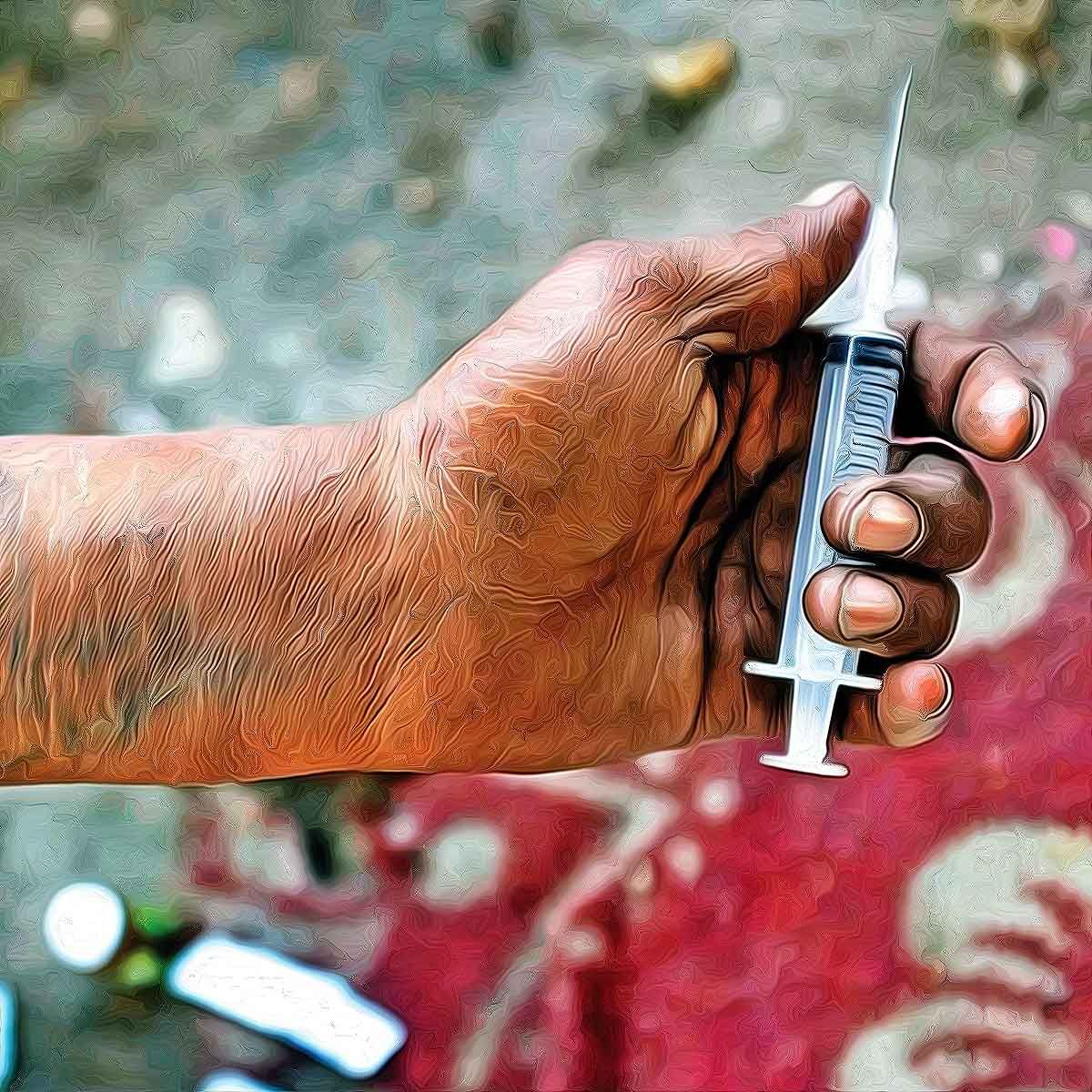
Drug abuse is a global phenomenon, affecting almost every country, but its extent and characteristics differ from region to region. India too is caught in this vicious circle of drug abuse, and the numbers of drug addicts are increasing day by day. The bane of drug abuse in Punjab has acquired the proportions of a pestilence that has shaken the entire society in the state. It is observed that in Punjab “drug abuse” is a raging epidemic, especially among the young.
|
Young Amritsar woman struggling to move after she 'injects herself with smack'
A video of a young woman from Amritsar, who is visibly under the influence of drugs and struggles to move, has gone viral on social media. The reports suggest she allegedly ‘injected herself with smack’. The Punjab Police has initiated a probe in the matter. The video is believed to be from the Maqboolpura locality of the Amritsar East constituency.
In the video, the young woman dressed in a red suit and wearing chooda was almost in a state of unconsciousness as she stood in the middle of the road unable to move. She was trying to walk but she was under such a strong influence of the drugs that she could not take even a single step.
The man recording the video talked about the sad state of the region that has been plagued by cases of drug abuse. The man was heard saying that the condition of the woman was because of the smack that she injected herself with.
Following the video that went viral on social media, the Police initiated a search operation in the area. As per reports, three people were detained by the Police, and drugs were recovered from them. A case has been filed under appropriate sections by the Police.
Sharing the video, a BJP leader said Maqboolpura is known as the village of widows and orphans as most of the people have died due to drugs.
While the issue has been heavily documented in movies, songs, books, and more, it continues to plague the state in tragic proportions.
Maqboolpura, a small locality in Amritsar, has often been in the news for drug abuse that has trapped its residents for generations. The area now falls under the constituency represented by AAP MLA Jeevan Jyot Kaur.
The video was shared on social media platforms over the weekend and alerted the local police to carry out a search operation in the Maqboolpura area on Sunday. Three men were nabbed during the operation and some narcotic substances were recovered from them.
|
Amritsar Police commissioner Arun Pal Singh took to Twitter to release a statement on the video, noting that Maqboolpura “is one of the drug hotspots” of Amritsar. “On receiving information about the incident in the viral video, a special operation was launched in Maqboolpura and 3 cases were registered against 3 persons and 117gms heroin has been recovered. The special drive against drug smugglers shall continue with added emphasis,” he said.
Police commissioner Arun Pal Singh said in a statement that the government of Punjab is trying to tackle the drug problem in the state. He added that the person who shot the video should have informed the Police about the incident instead of uploading the video on social media.
He urged people and the media to inform the Police department about such cases or any other crime. He further added that the Police have registered 483 cases under NTPC Act and arrested 650 people since April 1. Commissioner Singh said without the support of the Public it is not possible to eradicate drug abuse from the state.
One more video was uploaded on social media by journalist Nikhil Choudhary in which a woman said she has been taking drugs for 10-11 years. She further added she visited Maqboolpura as drugs are easily available in the area.
|
AAP-BJP tussle
Meanwhile, the ruling Aam Aadmi Party (AAP) and Bharatiya Janata Party (BJP) began a war of words over the issue.
Addressing a rally in Gujarat, AAP chief and Delhi chief minister Arvind Kejriwal said drugs were entering the country through a Gujarat port in large quantities and were being smuggled to Punjab and other parts of the country.
Meanwhile, BJP's national spokesperson Shehzad Poonawalla shared the video on Twitter and said that Kejriwal and Punjab chief minister Bhagwant Mann failed to fulfill their poll promise and let alcohol and drug abuse “flourish” in Delhi and Punjab.
“Arvind Kejriwal (Super CM) & Bhagwant Mann (titular CM) had promised to make Punjab “nasha mukt” in 1 week. Due to drug overdose this girl is unable to stand on her feet properly in Maqboolpura, Punjab. From Delhi to Punjab-Kejriwal & AAP allowed Nasha & Sharab to flourish,” the tweet read.
Farmer leader Sarvan Singh Pandher of the Kisan Mazdoor Sangharsh Committee (KMSC) called the video disturbing and that it revealed that even daughters were not safe in Punjab. He said that they will prominently raise the issue during their protests.
|
Drug Trafficking in Punjab: An ISI game plan to revive militancy
After its crusade against militancy, Punjab is now facing the peril of drug trafficking. As a transit route for drug trafficking, Punjab has slowly become a victim of drug abuse, which weakens the morale, physique, and character of its youth. Drug trafficking and trade is common in the Malwa, Majha and Doaba regions of the State. The Chief Minister's Office said that 40 percent of Punjabi youth in the age group of 15 to 25 years have fallen prey to drugs, and 48 percent of farmers and laborers are addicts. There is at least one addict in 65 percent of the families in Majha and Doaba. Derivatives of opium (70 percent) and tranquilizers, painkillers (30 percent), etc. are in great demand.
Apart from affecting the health and lives of the common people, the proliferation of drugs in Punjab can be seen as a part of the twin strategy of the Inter-Services Intelligence (ISI) of Pakistan to reactivate Punjab militancy and collect revenue to sustain its terrorist activities in India. According to Punjab Police sources, terrorists and anti-nationals are more active in this part of the country. Punjab, being a sensitive border state close to Jammu and Kashmir, is being used as a conduit for transporting men and material, including drugs and improvised explosives, to the trouble-torn J&K. In the first five months of 2003, around 1078 kg of Poppy husk, 3.5kg of heroin and 20kg charas were seized by Punjab police. Twenty-eight people, including two women, were arrested for narcotics trafficking. The following are a few such cases.
|
- On April 22, the Police in Jalandhar unearthed a six-member gang of poppy husk smugglers with the arrest of its members and recovery of more than 600 kg of contraband, near Kang Sabo village.
- On April 18, the Punjab police recovered 180 kg of poppy husk from a car.
- On January 10, Police in Phagwara, arrested five members of an inter-state gang of drug traffickers, including two having links with the Hizb-ul-Mujahideen (HM), and seized 20kg of charas (narcotics) worth Rs 25 lakhs (approx. US$ 57,000) from the truck in which they were traveling. They were also reportedly set to smuggle weapons into Punjab in a bid to revive terrorism.
It is also reported that taking advantage of dust storms, drug traffickers smuggle narcotics from Pakistan into Rajasthan, and then supply it to other places. The DGP, MS Bhullar, presided over a meeting of IGs and DIGs of Punjab, Rajasthan and Haryana police in December 2002 to discuss ways and means to effectively check the smuggling of poppy husk and opium from across the border, and Rajasthan in particular.
Drug trafficking is the main source of funding for terrorist outfits operating in J&K and other parts of the country. It has emerged as a profitable venture for terrorist organizations who have suffered in the recent past due to the freezing of their bank accounts and the dismantling of Hawala (money laundering) networks. As a result, a cozy nexus has developed between the terrorist outfits and mafia gangs with the latter being a willing partner for circulating drugs among local agents. Besides, mafia gangs help terrorist organizations to transfer arms and ammunition both across and inside the country.
|
To evade the tough vigil on the border in J&K, terrorist operatives enter the country via Nepal and Bangladesh and use Punjab as a transit route to supply men and materiel to the Kashmiri terrorists. In a recent statement, the Central Reserve Police Force chief indicated a shift in the ISI focus to the North-Eastern border as it has been finding it difficult to operate through the Western border.
Punjab, the sources admitted, was being used as a safe hideout by the terrorists and their supporters. A media report quoted a senior police official saying, “We know a lot of high-profile supporters of militants in Punjab and are keeping a close watch on them. There are, however, still some holes to be plugged. Some incidents (like the January 31 bus explosion at Garhshankar - which has left many questions unanswered), are causing anxiety to us.
|
Punjab govt to survey 14,000 jail inmates to exact causes
CHANDIGARH: For the first time in history, a survey of approximately 14,000 jail inmates will be carried out across Punjab in order to know the exact causes of drug addiction and to plan effective anti-drug intervention programs. At present around 46 per cent of prisoners in the state are addicted to drugs. Out of 30,000 prisoners, 14,000 tested positive for drugs.
The survey came as a follow-up to a drug screening project of the jail department. It will start from Monday (September 12) in all the twenty-five jails across the state. 350 volunteers (students of various universities and institutions) have been engaged to complete the purpose within twelve days' time span.
|
Renowned educationists and professors of Punjabi University, ISB Mohali and DAV collage Sector 10 were roped in as research committee members to prepare the questionnaire in collaboration with officers of the Punjab prisons department and Special Task Force on Drugs (STF), along with Dr Ranbir Singh de-addiction expert and co-founder of OOAT program.
The survey will be in coded format to keep it confidential and the prisoner's identity will not be revealed. During the interview jail officials will remain at a reasonable distance and permit the interviewee to give their responses without apprehension while keeping observation over them. The jail officers have also been instructed to issue identity cards to interviewers and sensitized to ensure that the interviewers are made secure and comfortable in each jail.
The identity of the prisoner shall be kept anonymous as each prisoner will be allotted a special code number for this purpose. During the survey, the jail department is making it sure that the identity of the prisoners is not revealed when they are asked the questions and the answers are recorded by the interviewer.
|
The questionnaire will contain 85 questions based on factors (both inside and outside prison) that may have a substantial impact on the addiction or de-addiction status of the prisoners. These factors include geographical factors, psycho-social factors, socio-economic factors, policing, prison specific, and de-addiction.
questionnaire includes questions such as how to improve de-addition services in jails, how can authorities effectively detect drugs in and outside the jails, how they manage to get drugs in the jails and outside, how to improve the peer support system, how they manage when they are unable to get drugs, how can prevention programs be made more effective and so forth.
|
The prisoners will also be asked about how long they have been in jail, how many times they have come to jail and duration, their income level, till which class they have studied, what is their occupation and the list is endless.
The idea of the survey was put forward by Harpreet Singh Sidhu Special DGP (Prisons) before the Punjab Jail Minister Harjit Singh Bains and the Additional Chief Secretary (Jails) KAP Sinha. It is a joint effort between the jails department and the Special Task Force on drugs (STF) which is also headed by Sidhu.
|
Bains addressed the training program held on September 10 to motivate the students and staff. After the completion of the survey inside the prisons, a similar survey would be conducted amongst the general public to get large-scale data in order to formulate a long-term action plan for eradicating the menace of drugs in the whole state, he added.
|
 Support Us
Support Us
Satyagraha was born from the heart of our land, with an undying aim to unveil the true essence of Bharat. It seeks to illuminate the hidden tales of our valiant freedom fighters and the rich chronicles that haven't yet sung their complete melody in the mainstream.
While platforms like NDTV and 'The Wire' effortlessly garner funds under the banner of safeguarding democracy, we at Satyagraha walk a different path. Our strength and resonance come from you. In this journey to weave a stronger Bharat, every little contribution amplifies our voice. Let's come together, contribute as you can, and champion the true spirit of our nation.
 |  |  |
| ICICI Bank of Satyaagrah | Razorpay Bank of Satyaagrah | PayPal Bank of Satyaagrah - For International Payments |
If all above doesn't work, then try the LINK below:
Please share the article on other platforms
DISCLAIMER: The author is solely responsible for the views expressed in this article. The author carries the responsibility for citing and/or licensing of images utilized within the text. The website also frequently uses non-commercial images for representational purposes only in line with the article. We are not responsible for the authenticity of such images. If some images have a copyright issue, we request the person/entity to contact us at This email address is being protected from spambots. You need JavaScript enabled to view it. and we will take the necessary actions to resolve the issue.
Related Articles
- Some miscreants burnt the religious book Hanuman Chalisa and threw the remains in garbage in Bathinda in Punjab: Hindu organizations staged protests against sacrilege, blames Aam Aadmi Party for inaction
- Call raised for a Patiala Bandh by Hindu Groups after armed Khalistani mob attacked a Kali temple and ran amok in the city brandishing swords: FIR registered against Khalistanis
- Massive protest against the Bhagwant Mann-led Aam Aadmi Party government in Punjab as thousands of dairy farmers from across Punjab gathered at the Verka Milk Plant in Mohali: PDFA is leading these protests
- ‘Khalistan Murdabad’ march carried out by Hindu organisation Shiv Sena attacked by Pro-Khalistan supporters, hurl stones and brandish swords at Ma Kali Temple in Patiala
- Ahead of the upcoming elections in states AAP making a ton of promises to lure voters to secure a win at any cost: How ‘free electricity' and ‘free money‘ lollipop by Kejriwal puts a high cost on the public
- Famous Punjabi singer and rapper Sidhu Moosewala shot dead in an attack in Mansa, Punjab: Bhagwant Mann-led Aam Aadmi Party government withdrew his security just yesterday
- Chartered flight for AAP supremo Arvind Kejriwal and Bhagwant Mann’s trip to Gujarat for launching political campaign cost Rs 45 lakh of Punjab Govt: RTI activist Grewal
- Khalistani terrorist Narain Chaura, mastermind of the Burail jailbreak with Babbar Khalsa links, tried to assassinate Sukhbir Badal at Golden Temple, but Punjab Police foiled it, sparking outrage, demands for an NIA probe into Punjab’s rising extremism
- "जलमग्न": Three IAS aspirants from Kerala, Telangana, and UP perish in a flood at Rau’s IAS Study Circle, Delhi, as heavy rains overwhelm inadequate drainage, with outraged calls for accountability targeting AAP's negligence in infrastructure maintenance
- Deputy CM Manish Sisodia’s close aid Nisha Singh held guilty and sentenced to 7 years in prison for inciting violence: A bevy of eminent intellectuals called it a political vendetta to whitewash her criminal behaviour
- "जो बोले वो हलाल": Shiv Sena Punjab leader Sandeep Thapar, descendant of martyr Sukhdev Thapar, brutally attacked by Nihang Sikhs in Ludhiana after his security was reduced; incident raises serious questions about law and order under the AAP government
- In a twist befitting a Bollywood plot, AAP MP Raghav Chadha, fresh from his lavish wedding with starlet Parineeti Chopra, finds his sprawling Lutyens bungalow snatched away, from palace to pared-down pad, it seems not all fairy tales has storybook endings
- "Advertisement Govt fails to curb violence": An underage boy hacked to death by a mob within the premises of Ludhiana Civil Hospital in Punjab in police presence, ghastly act caught on CCTV, netizens raise questions over inaction
- 50 Punjab policemen in 10-12 cars came to Delhi and arrested BJP leader Tajinder Pal Singh Bagga, assaulted the leader's father: Did not even let Bagga put on his turban even after several requests
- Even as Delhi lags behind in vaccination, Arvind Kejriwal govt continues PR campaign with full-page ads in various newspapers















